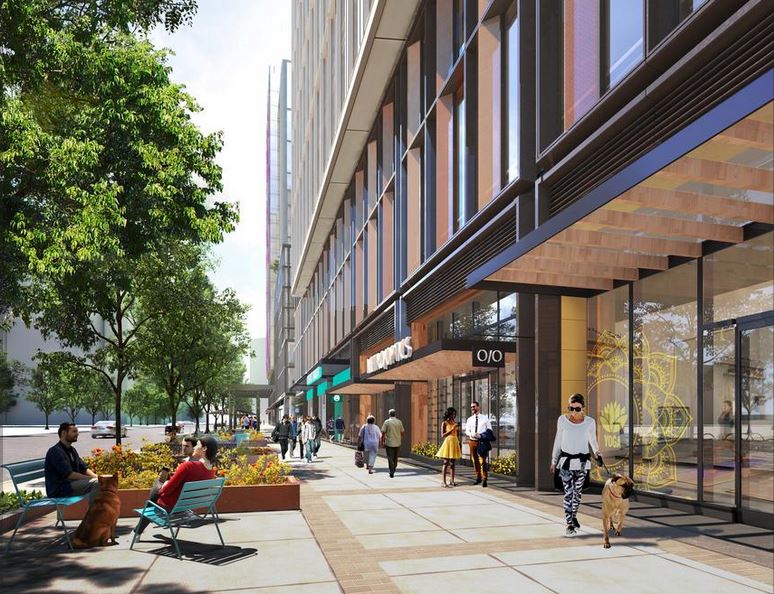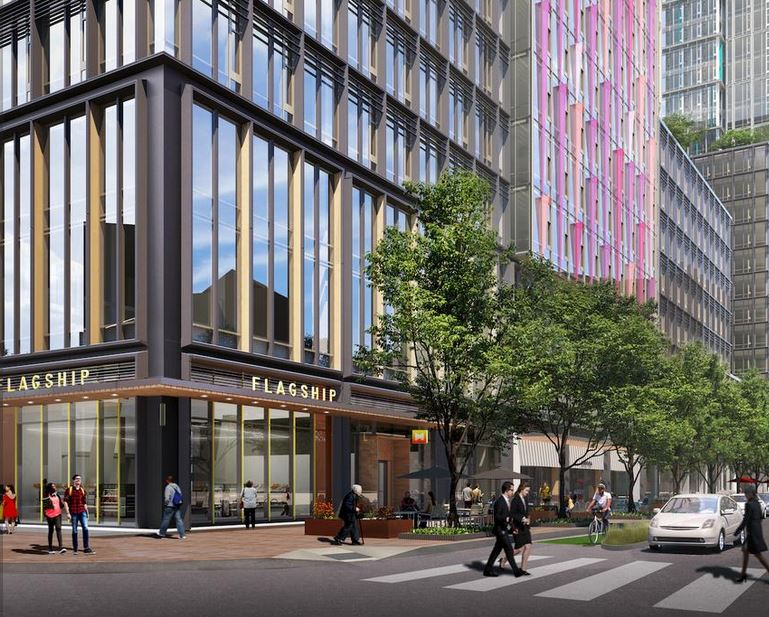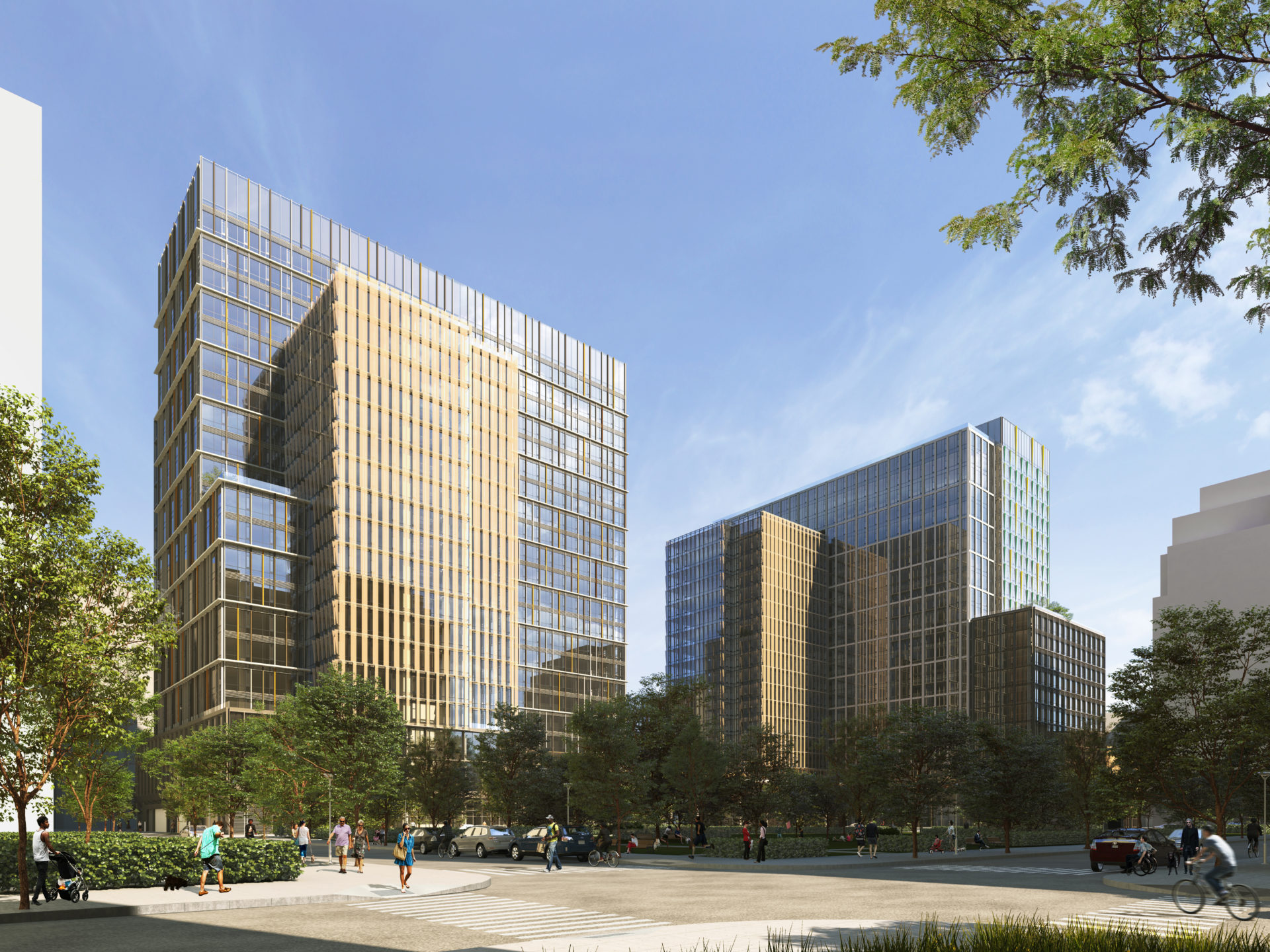
[Seneca Note: Seneca Group is serving as Amazon’s owner representative of the Arlington HQ2 project. We are supporting the overall HQ2 development process from site evaluation and team assembly to design, permitting and construction.]
From local retailers to a banana stand, Amazon.com Inc. Wednesday offered a taste of what’s to come for the residents and employees of Pentagon City’s Metropolitan Park, the home of the first new HQ2 building.
The Seattle company’s top real estate executive, John Schoettler, introduced the second headquarters to a standing-room-only crowd of about 200 residents. While he broadly explained the overall architecture and aesthetic, Schoettler’s presentation was a distillation of how the Seattle culture could be translated in Arlington.
When explaining programs and open space, Schoettler often showed slides of the Seattle offices. The audience was varied and included critics like Danny Cendejas of For Us, Not Amazon, who has disrupted other Amazon events but in this case just viewed the presentation.
Arlington representatives noted this meeting was the first of several in a long site plan approval process, and Schoettler said Amazon (NASDAQ: AMZN) has reached out to Arlington business forums, nonprofits and civic associations, particularly in the 22202 ZIP code, and will continue to do so.
“Amazon has a commitment and a reputation of servicing the communities where our employees live and work,” Schoettler said. “We plan to connect with our new neighbors as long as we are here. After all, isn’t that what a good neighbor should do?”
Amazon is looking to build a couple of 22-story towers at Met Park totaling just over 2 million square feet. These are the first phase of a 4 million-square-foot, 15-year HQ2 buildout. JBG Smith Properties (NYSE: JBGS) is Amazon’s landlord, leasing more than 500,000 square feet in Crystal City to the tech company, and the tech giant’s development partner for the initial towers and the next piece, the 10-acre PenPlace.
Schoettler said the “more than 55,000 square feet of retail” would be “carefully curated” so that it would be filled with “locally owned and operated businesses.” A day care center is planned for the west corner of the north tower.
“As we have done in Seattle, here in Arlington we will work hard to foster a vibrant and varied retail space,” said Schoettler, whose company has almost single-handedly upended brick-and-mortar retail.
The development would expand the green space at Metropolitan Park by about 40%, making it “almost 2 acres,” said Toby Hasselgren, a partner at ZGF Architects LLP, which is the project’s architect. The increased green space would be “privately owned but publicly accessible,” Schoettler said. The towers will have gardens on varying roofs.
The proposed HQ2 development would expand the green space in Met Park by 40% “to almost two acres” Hasselgren said. pic.twitter.com/fWr8lStWI3
— Jonathan Capriel (@CaprielWBJ) July 11, 2019
Some of this green space could be converted into a community garden, much like in Seattle where vegetables grown in similar conditions are donated to local restaurants and nonprofits, Schoettler said.
“We employ a team of horticulturalists throughout the South Lake Union neighborhoods,” Schoettler said. “These include not just plants in the Spheres, but also plants in bioretention gardens, greenrooms and urban vegetable gardens.”
Amazon has mentioned it wants its buildings to reach “net-zero energy,” and Schoettler reaffirmed that. The initial goal is to reach the LEED Gold standard, and the lowest energy use among Arlington office buildings.
HQ2’s transportation plan will be modeled after Amazon’s West Coast home, Schoettler said. About 20% of Amazonians live within a ZIP code distance of their Seattle offices and 70% commute by means other than their car, he said. The current Met Park plan indicates that about 10% of the workers will walk and 30% will drive.
The Met Park development could include public art, “resilient landscaping” and maybe a “community banana stand,” a now-hallmark program launched in Seattle in 2016 that gives free fruit to all, Schoettler said.
“Since its inception, several million free bananas have been given to employees, local residents, community members and visitors alike,” he said. “The banana stands are very popular.”
In addition to ZGF and development management firm Seneca Group, both of which were involved with Amazon’s Seattle headquarters, the company has retained Tysons-based civil engineering firm Vika Cos., structural architect Thornton Tomasetti, and mechanical engineering firm GHT Ltd. Consulting. It has also enlisted the aid of Alexandria-based landscape architecture firm Studio 39 and D.C.-based transportation engineering firm GoroveSlade Associates Inc. while Nan Walsh and Walsh, Colucci, Lubeley & Walsh PC serve as the project’s land use attorney.


